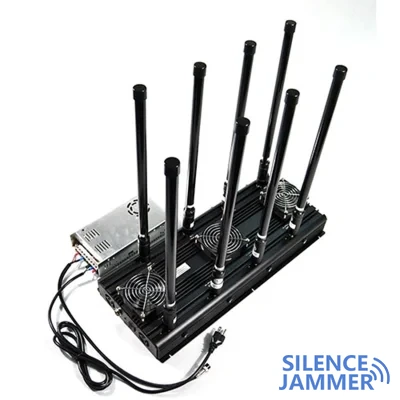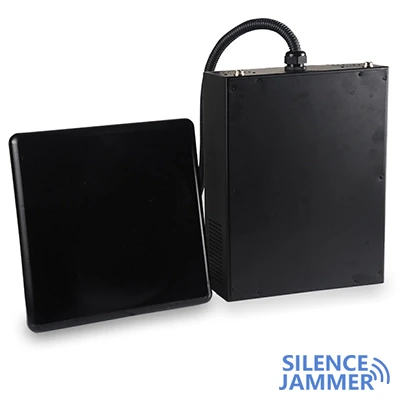In modern warfare, improvised explosive devices (IEDs) have become one of the most commonly used weapons by insurgents and terrorists , especially radio-controlled improvised explosive devices (RCIEDs), which pose a particularly serious threat to soldiers and military vehicles.
To address this problem, Northrop Grumman has developed an advanced jamming system called the Joint Counter-Radio Controlled Improvised Explosive Device Electronic Warfare Joint Crew (JCREW I1B1). The RF signal jammer system is a universal open-architecture RF jammer specifically designed to protect infantry, land vehicles and fixed buildings from IED attacks.
Development and Background of JCREW I1B1

The U.S. Naval Sea Systems Command signed a $57.7 million contract with Northrop Grumman in 2017 to fully promote the production of the JCREW I1B1 system. The RF signal jammer system is designed to provide combat personnel with protection against radio-controlled improvised explosive devices, and is not only suitable for Army infantry, but can also be widely used in military vehicles and permanent fixed sites. Additional options in the contract can increase the total value of the project to more than $500 million, showing the potential importance of the system to the U.S. military in combat.
The development of the JCREW I1B1 system is based on Northrop Grumman's Freedom 240 technology, which can effectively block radio signals, thereby preventing insurgents from activating IEDs through remote control. The system is highly adaptable and can be modularly upgraded or adjusted through its common open architecture to cope with the ever-changing threat environment.

Technical Features and Advantages
- Open Architecture: The system uses a universal open architecture with high flexibility, can quickly adapt to different battlefield needs, and effectively reduce the cost of the entire life cycle. This design also enhances protection against global threats and reduces interference with friendly communications.
- Multifunctional Electronic Warfare Integration: The JCREW I1B1 system integrates a variety of electronic warfare functions, which can form an "electronic protection barrier" in the combat area, effectively interfere with enemy radio signals, and block the remote detonation mechanism of IEDs, thereby greatly reducing the threat of enemy attacks.
- Advanced Signal Jamming Technology: The Freedom 240 technology in the system can interfere with a variety of radio signals and is suitable for complex combat environments. It can be installed on military vehicles or as a portable device carried by a single soldier to provide comprehensive protection.
Northrop Grumman's Freedom 240 technology is also a key component of the system. Freedom 240 is an advanced electronic warfare signal jammer technology that can interfere with multiple types of radio signals and achieve protection in complex combat environments through a highly integrated system structure. The system can be installed on military vehicles or carried by infantry as a portable device to provide all-round protection.
JCREW I1B1 RF signal jammer system application in global operations
The JCREW I1B1 system is not only suitable for the US Marine Corps and Navy, but can also be widely used in Air Force combat operations. Its open architecture enables it to play a powerful protective role in different military services and combat environments. As a multi-purpose electronic warfare tool, the JCREW I1B1 system can quickly adjust its configuration according to battlefield needs, thereby providing flexible anti-IED protection for combat personnel.
The design of the JCREW I1B1 takes into account the global combat needs and can cope with radio-controlled threats in different regions. Whether in the desert battlefields of the Middle East or in the urbanized war zones of Eastern Europe, the system can effectively play its role in countering radio-controlled IEDs. In addition, because the system adopts a common architecture, its subsequent technical updates and maintenance are also easier, allowing the US military to maintain its technological advantage in the field of electronic warfare.
Far-reaching impact on military operations
Northrop Grumman's JCREW I1B1 system not only greatly improves the security of the United States and its allies in global military operations, but also reduces interference with friendly communication jammer systems through advanced technical means. Compared with traditional electronic warfare jammers, the open architecture of the JCREW I1B1 system gives it greater scalability and flexibility, which means that it can be further upgraded and optimized according to different battlefield needs in the future.
The full-rate production of the jammer system marks a new milestone in electronic warfare technology. As the threat of IEDs on the battlefield continues to increase, technology that can effectively counter radio-controlled IEDs is essential. The emergence of JCREW I1B1 means that the US military and its allies have a more reliable and advanced protection tool when dealing with IED threats. By jamming enemy radio signals, this RF signal jammer system can significantly reduce the damage to soldiers and vehicles from IED attacks, thereby improving the safety of warfighters and the success rate of missions.
The JCREW I1B1 RF signal jammer system developed by Northrop Grumman represents the latest achievements in electronic warfare technology. Through its common open architecture and Freedom 240 technology, the RF jammer system provides the US military and its allies with powerful anti-radio controlled IED protection capabilities. With the full production of the RF jammer system, the US military will have more effective protection in its military operations around the world and reduce the risks posed by IED threats.





